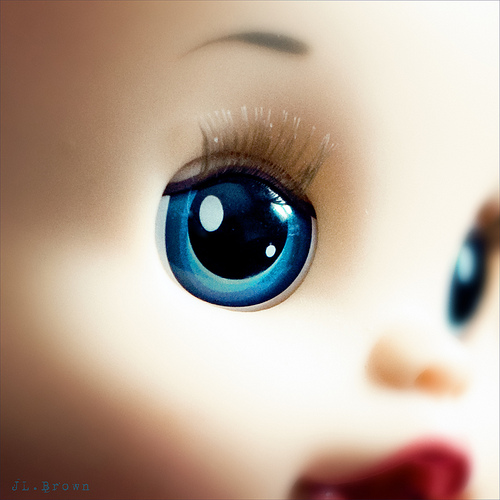
Image Credit:
My classroom tends to feature a lot of group and class discussion. This semester's first novel was Salmon Rushdie's The Satanic Verses, a 576-page tome full of complex allusions to recent Indian politics, the foundation of Islam, and the Western literary canon. The second book is Toni Morrison's The Bluest Eye, a slim 216-page novel dealing with Jim Crow era America. Unexpectly, I'm finding that Rushdie, not Morrison, most encourages classroom discussion.
The contrast is counterintuitive, especially since my students preferred Morrison's work and (as demonstrated through in-class polls) found it much easier to relate to Morrison's characters. Where students could immediately understand Morrison's goal of depicting the self-loathing created by a racist culture, Rushdie's celebration of the immigrant experience of hybridity, impurity, and transformations was much harder for students to wrap their minds around. Morrison's realistic style allowed students to think about the experience of others, whereas Rushdie's magical realist aesthetic often perplexed students. Topping it all off was the religious element; Morrison's depiction of the role of Christianity in American culture felt infinitely more familiar to students than Rushdie's complex intimacy with and antagonism towards a form of Islam most students have experienced only through the lens of action movies and news reports.
Yet if Rushdie alienated students in a number of ways, I was surprised at one feature that kept drawing students into a richer appreciation of his work. Again and again, Rushdie questions the foundations of his own position, performing a sort of postmodern self-deconstruction. Students recognized echoes of Rushdie's own experience in figures ranging from the rich atheist who joins reluctantly in Ayesha's magical pilgrimage to the poet Baal who mocks the prophet Mohommad. Yet they also saw that each of these figures was interrogated by the text itself. The rich atheist offers to fly people on their pilgrimage to Mecca--but only a few, because he can't afford to take everyone. The prophet Baal writes beautiful, irreverent, and human verses--but in the face of despotism, he retreats away from political verse and writes nearly-meaningless love stories. When students saw that Rushdie was willing to criticize himself, it opened up class discussion; if the author himself was willing to argue both sides of a complex issue, why shouldn't students join in the fray?
Toni Morrison, on the other hand, is easier to understand but much, much harder to criticize. My mostly white students follow her depiction of black culture in Lorain, Ohio during the 1940's and can recognize both the horrors and consolations that such a life can provide, but they have neither the knowledge nor the life experiences to challenge Morrison's portrayal. Similarly, they can recognize (especially after my leading questions and mini-lectures) Morrison's ubiquitous theme of the importance of recognizing fellow human faces and resisting dehumanizing narratives, but Morrison’s arguments are so powerful that students feel they can do nothing but assent to her claims, at least for the purposes of this class. The book presents an odd paradox. Students seem to legitimately enjoy it, following its emotional twists and turns and working hard to understand its diverse cast of characters. Students even seem to be capable of understanding Morrison’s depiction of the relationship between stories we take in passively and attitudes that can drive out lives. Yet, in a way that wasn’t true of The Satanic Verses, students find it difficult to talk about The Bluest Eye—that is, to express the sort of varying opinions that brought Rushdie’s work to life in the classroom.
The afterward to The Bluest Eye may provide some antidote to this difficulty, though I haven’t introduced it to my students yet in order to preserve their sense of surprise at the story's development. In the afterward, Toni Morrison does dramatize some of the difficult decisions she has to make as an author, and in particular some issues around her complicated and deeply considered representation of sexual violence. Yet of course that conversation brings its own landmines, and so I try to at least limit the amount of time spent discussing such sensitive issues. In the meantime, the two books stand as an important reminder of a counterintuitive truth: that works which students find easy to understand are not necessarily easy to discuss, and that sometimes works that seem to be immensely challenging may, in the classroom, be far easier to teach than we would immediately think.

